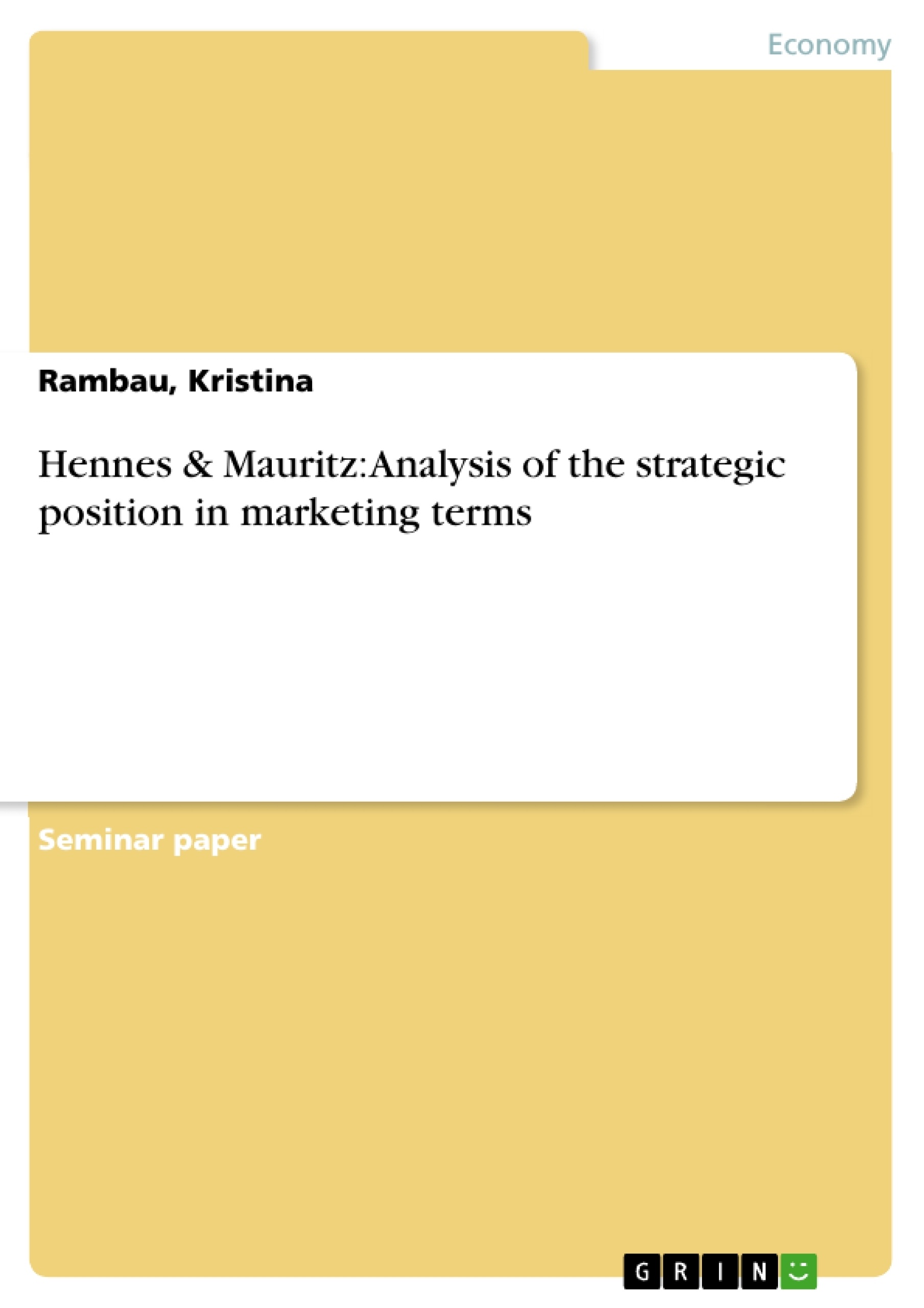1 Introduction
The first “Hennes” store, a women’s clothes store, was opened in Vastaras, Sweden, in September 1947 by its founder Erling Persson. After expanding to Stockholm, Persson bought a hunting and gun store in 1968, where he sold men’s clothes and which he called “Mauritz”. The new company “Hennes Mauritz” (HM), which is Swedish for “Hers His”, was born.
Today HM is one of the most successful clothing retailers in Europe. It sells around 400 million garments a year and has 620 stores in 14 countries. In April 2000 HM started going global by successfully expanding to the United States, with its first shop on the Fifth Avenue in New York. The company does not manufacture itself but works together with approximately 900 suppliers in Europe and Asia. To supervise this production HM maintains twenty production offices around the world.
Around 26500 employees are working for HM in these days, most of them in one of the shops. The overall turnover of the group has been SEK 32977 million in 1999, which equals approximately £ 563,614 million. HM employs 70 designers who along with pattern designers and buyers create the collections for women, men, youngsters and children. The overall business concept is “Fashion and quality at the best price” (www.hm.com).
Germany is HM’s biggest market with 32% of the group’s turnover. The first shop in Germany opened in 1980 but today you’ll find the company in each big city, and since the fall of the Berlin Wall especially in the eastern regions. HM sells its clothes and accessories in 167 stores all over the country, and the shop now belongs to each good shopping centre or Highstreet.
The market of HM is very complex, and the accessible data severely limited. Therefore only the German market will be considered in this assignment. Another reason is that my personal working experience took place in Germany and I cannot say for sure if the group faces the same problems in all countries. I worked for HM in Munich, Germany, for three years as well as school, serving customers, working at the till, and being responsible for customer services and new staff development. Then I was a full-time employee for one year. After starting my studies in 1997 I worked again part-time for HM Rosenheim, Germany. Through these seven years I attained a deep insight in the company’s daily affairs and problems occurring at the operational base in the shops.
But what factors led to the magnificent success of HM although the clothes retailing sector is conducted by one of the hardest competition? Which organisational strengths and opportunities supported HM on its way, and which weaknesses and threats blocked even greater turnovers? What environmental factors may have an impact on the decision making process? And in what way does the company segment its market and find its target groups? Where are the products of HM placed in the market in comparison to the ones of its strongest competitors and what could the
- Citation du texte
- Rambau, Kristina (Auteur), 2001, Hennes & Mauritz: Analysis of the strategic position in marketing terms, Munich, GRIN Verlag, https://www.grin.com/document/101131
-

-

-

-
Téléchargez vos propres textes! Gagnez de l'argent et un iPhone X. -

-
Téléchargez vos propres textes! Gagnez de l'argent et un iPhone X. -

-
Téléchargez vos propres textes! Gagnez de l'argent et un iPhone X. -

-
Téléchargez vos propres textes! Gagnez de l'argent et un iPhone X. -

-
Téléchargez vos propres textes! Gagnez de l'argent et un iPhone X. -

-
Téléchargez vos propres textes! Gagnez de l'argent et un iPhone X. -

-
Téléchargez vos propres textes! Gagnez de l'argent et un iPhone X. -

-
Téléchargez vos propres textes! Gagnez de l'argent et un iPhone X. -

-
Téléchargez vos propres textes! Gagnez de l'argent et un iPhone X. -

-
Téléchargez vos propres textes! Gagnez de l'argent et un iPhone X.

